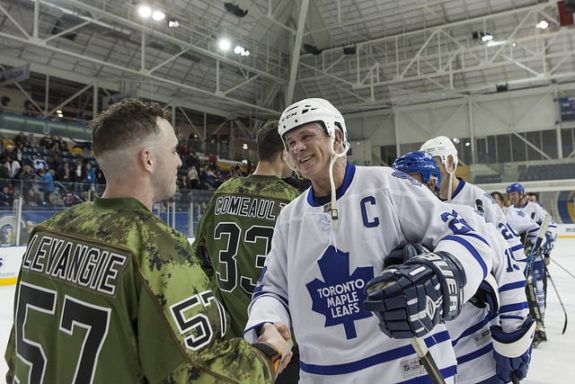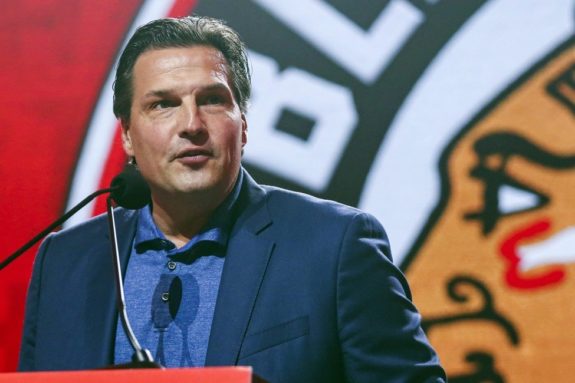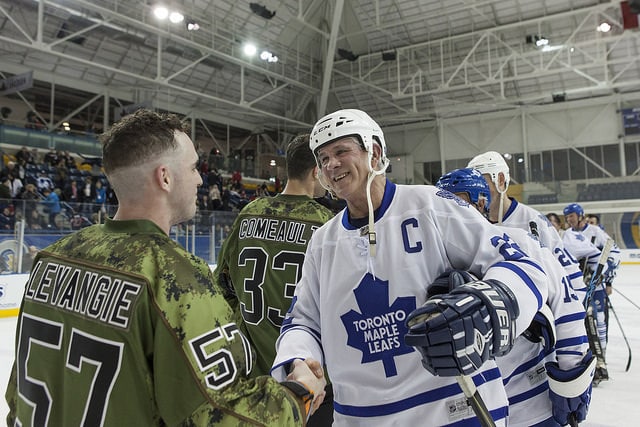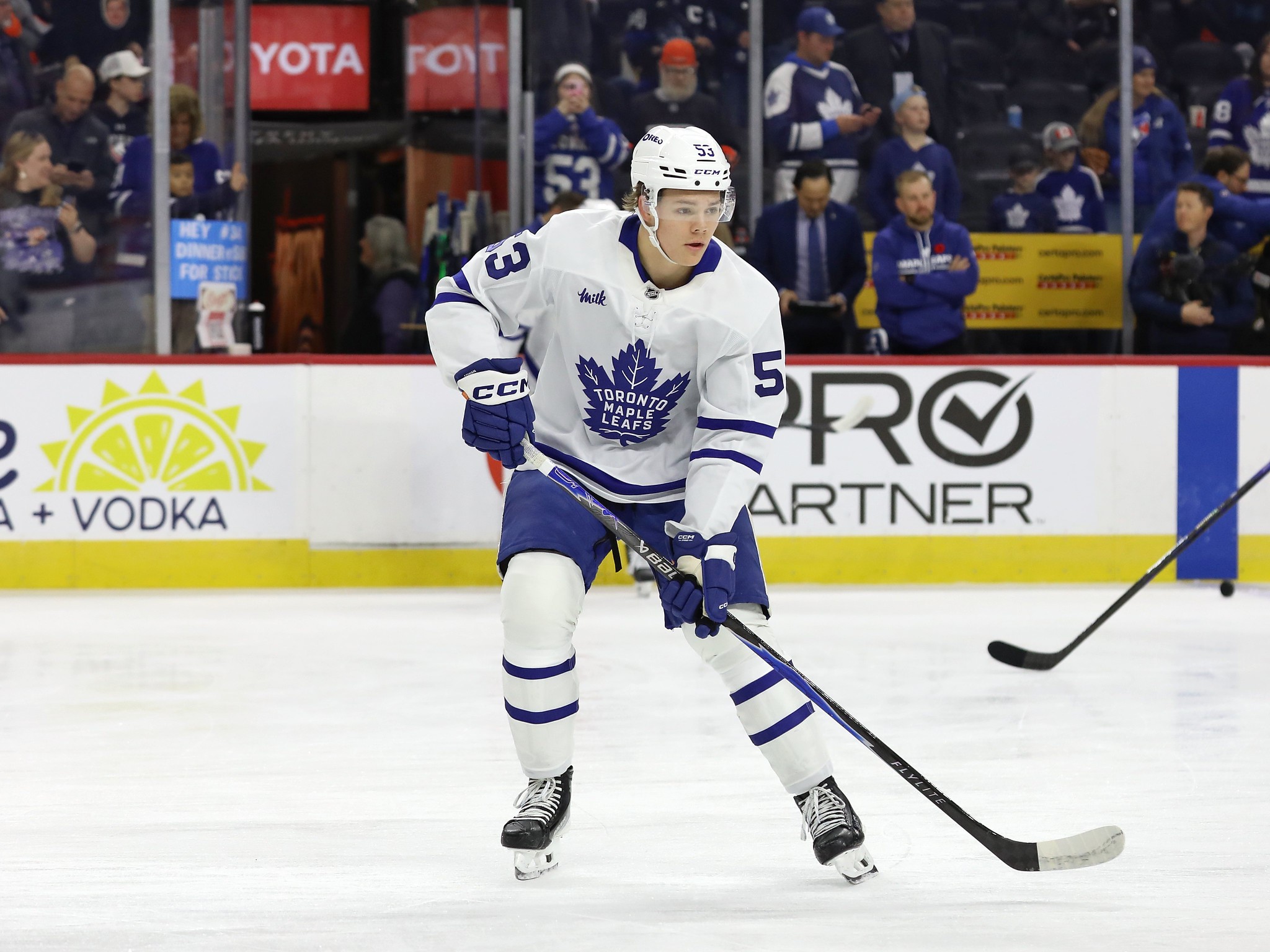Before Auston Matthews torched the record books of the Toronto Maple Leafs, in the 1980s, Rick Vaive was the first Maple Leaf to reach 50 goals and held the record for the most goals in a single season in franchise history. But he wasn’t always a Maple Leaf. His trade from the Vancouver Canucks to Toronto had a ripple effect across the league, impacting numerous teams due to the trades that followed that can still be felt today.
Vaive’s Time in Vancouver
Vaive was one of a handful of players to play professionally in North America before he was drafted. He made his professional debut at age 17 with the Birmingham Racers of the World Hockey Association (WHA), scoring 26 goals and 59 points in 75 games.
He was drafted into the NHL in 1979 by the Canucks. In 47 games with Vancouver, he scored a respectable 13 goals and 21 points. Vaive’s time in Vancouver is underrated. However, the Canucks thought they could get more value by trading him for a roster player who might have a bigger impact on the team.
On Feb. 18, 1980, Vancouver sent Bill Derlago and Vaive to the Maple Leafs for Jerry Butler and Tiger Williams. In his first 22 games with Toronto, he scored nine goals and seven assists. It was a far cry from the production he was known for, but it was a strong start. In his first full season with the club, he scored 33 goals and 62 points, while showcasing his extraordinary talent. The following season, Vaive broke the glass ceiling, becoming the first Maple Leaf to reach the 50-goal mark, scoring 54 goals and adding 35 assists. That record stood until Matthews broke it in April 2022. In 534 games as a Maple Leaf, Vaive scored 299 goals and 537 points.

Vaive spent parts of eight seasons in Toronto before he was traded to the Chicago Blackhawks, along with Bob McGill and Steve Thomas, for Al Secord and Ed Olczyk. He never captured that same magic he had with the Maple Leafs, but he still scored 43 goals in his first season as a Blackhawk. He was finally sent to the Buffalo Sabres to wind down his career across the border from the city that shot him to stardom.
Toronto Maple Leafs Branch
Vaive was traded to the Blackhawks, along with McGill and Thomas, for Olczyk and Secord. Secord was on the back nine of his career when he arrived in Toronto. As a Black Hawk (he played for Chicago before they made “Blackhawk” one word), he had multiple 70-point campaigns, but he scored 20 goals and 57 points in 114 games with the Maple Leafs. In the 1988-89 season, Secord was sent to the Philadelphia Flyers for a 1989 fifth-round pick, which was used to select Keith Carney – and not the one who made it to the NHL.
Related: Cam Neely Trade Tree: Vancouver to Boston
As for Eddie Olczyk, he’s somewhat forgotten as a Maple Leaf. Yes, this is the same Edzo who sits between the benches on some national broadcasts for ESPN and TNT, but he used to play for the Maple Leafs. Despite being known as a Black Hawk in his playing career, the most productive seasons of Olczyk’s career came in Toronto. His debut season with the Leafs saw him put up 42 goals and 33 assists for 75 points in 80 games; that was about right for what he did in Chicago. It was the explosion that followed that was new. In 80 games, Edzo scored 38 goals and 52 assists for 90 points. That was a career-high, which he followed up with 88 points the following year. In 257 games with the Leafs, Olczyk scored 116 goals and 151 assists for 267 points before he was traded.
Eddie Olczyk’s Branch
Olczyk was packaged with Mark Osborne and sent to the Winnipeg Jets for Dave Ellett and Paul Fenton. Fenton’s is the easier branch to track, as he only had a brief stint with the Maple Leafs, playing 30 games with five goals and 15 points before he was traded again. In fact, Fenton was traded four times in a calendar year (this was the first). He was packaged with John Kordic and sent to the Washington Capitals for a 1991 fifth-round pick, which was used to select Alexei Kudashov. Kudashov played 25 games with the Maple Leafs, scoring once before he left the league.

Ellett was a serviceable player for the Maple Leafs, but he wasn’t a big producer like Vaive. He scored 51 goals and 223 points in 446 games across seven seasons with the team for a 0.5 points-per-game production rate. Ellett’s best offensive years were as a Jet, and he spent the rest of his career trying to recapture his scoring touch. He was sent to the New Jersey Devils with Doug Gilmour and a 1999 third-round pick for Jason Smith, Alyn McCauley, and Steve Sullivan in February 1997.
Sullivan spent four seasons in Toronto, scoring 35 goals and 85 points in 154 games before he was claimed off waivers by the Blackhawks. His last NHL season was in 2012-13 when he played for the Arizona Coyotes and New Jersey Devils.
As for Jason Smith, he spent most of his career as an Edmonton Oiler. He played three seasons in Toronto, scoring five goals and 34 points as a peacekeeper. Smith was traded to the Oilers for a 1999 fourth-round pick and a 2000 second-round pick. The fourth-rounder was used to select Jonathan Zion, who never made it to the NHL, while the second-rounder was used to select Kris Vernarsky. He never played with Toronto, suiting up for 17 career games with the Boston Bruins.
Alyn McCauley’s Link
McCauley scored 33 goals and 49 assists in 304 games over six seasons with the Maple Leafs. He became a Selke Finalist in 2003-04 after he was packaged with Brad Boyes and a 2003 first-round pick in a deal with the San Jose Sharks for Owen Nolan.
Nolan was a force. He racked up 1,800 penalty minutes and 800 points throughout his career as a fighter with offensive power. However, he was on the downside of his career when he got to Toronto. He played in only 79 games, scoring 26 goals and 34 assists. He helped the team reach the 2004 Playoffs, but he left without a trade when the salary cap was introduced.
Derlago’s Branch
Derlago’s branch takes us back to the initial Vaive trade. Like Vaive, the best years of Derlago’s career were spent in blue and white. In 1981-82, he finished with 34 goals and 84 points in 75 games. Across seven seasons in Toronto, Derlago played 378 games, scoring 158 goals and 334 points.
He was sent to the Bruins in October of 1985 for Tom Fergus, who also spent the bulk of his career in Toronto. Fergus spent seven seasons with the club, scoring 118 goals and 297 points in 357 games. His best season was his first, when he scored a career-high 31 goals and tied his career high in points with 73. He reached 60 points one more time before he was traded to the Canucks for cash considerations, so, technically, he was sold. This is the final branch of the Maple Leafs side of this trade tree.
Canucks Side
The Canucks hoped the return in the Vaive trade would help their push for a Stanley Cup. Tiger Williams was best known for one thing – he holds the NHL record for penalty minutes with 3971. He was a respectable player for Vancouver, however, with 83 goals and 82 assists in 312 games, along with 1324 penalty minutes. He is the most extreme version of “Punch the puck in,” and it made him a desirable addition. The Detroit Red Wings traded for him, sending Rob McClanahan to the Canucks. McClanahan never played for Vancouver and left professional hockey to become a financial broker.
Jerry Butler wasn’t traded by the Canucks, so our branch ends here. In 128 games with the Canucks, he scored 19 goals and 20 assists. He was on the downside of his career, and left for Winnipeg after three seasons before leaving the NHL altogether. It’s a disappointing end to what could have been a remarkable trade tree.
The Ripple Effect of the Vaive Trade Tree
Vaive’s impact can still be felt today. Matthews broke his 40-year-old record just a few years ago. If this trade hadn’t happened, that record might never have been there. It’s just a reminder that there are many positives in Maple Leafs history. Despite their recent shortcomings, looking to the past might be one way to move into the present.




